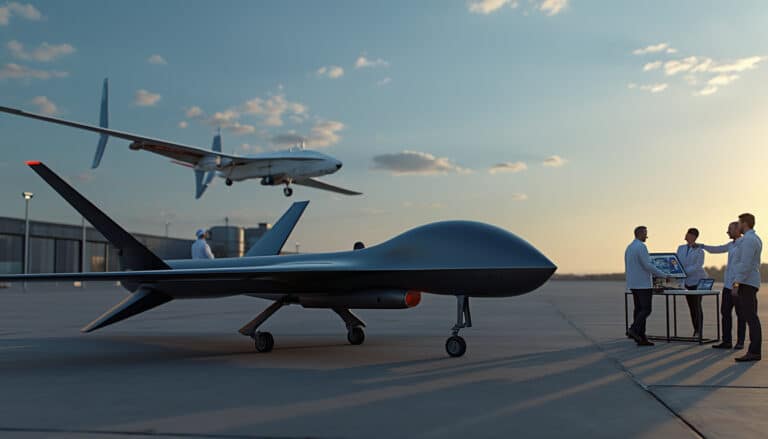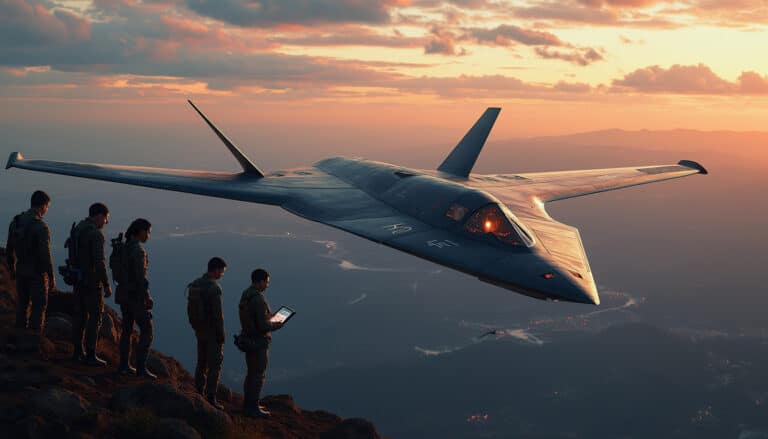The world of space navigation is undergoing significant change. The all-new GPS III satellites are redefining technological capabilities. The armed forces are gaining a competitive edge through innovative initiatives.
With the advent of the GPS III satellites developed by Lockheed Martin, positioning and navigation applications are reaching new heights. The Air Force is now utilizing authority recently granted by Congress to launch two development projects ahead of their formal approval in the budget cycle. Although details remain classified, one of these initiatives aims to enhance the resilience of GPS satellites, while the other focuses on a battle management system for tracking mobile targets from the air and space.
According to a press release dated April 16, the Secretary of the Air Force, Frank Kendall, emphasizes that this initiative, dubbed Quick Start, marks a crucial turning point for national security objectives through unprecedented speed and efficiency. By allowing military services to kick off certain programs before parliamentary approval, Quick Start accelerates the response to new threats and the adoption of emerging technologies in real-time.
Adopted in the National Defense Authorization Act (NDAA) for fiscal year 2024, this authority allows each branch of the armed forces to benefit from this acceleration, with an annual funding cap of $100 million. Programs initiated under this framework must be integrated into a formal acquisition program or a similar pathway within the year, unless a one-time extension is granted by the service secretary.
The two programs selected by the Air Force and the Space Force are expected to feature in the service’s 2026 budget request, set to be unveiled early next year. The Space Force has, in February, solicited the private sector to develop lower-cost GPS satellites compatible with the existing constellation, currently composed of 31 satellites produced by Lockheed Martin.
Cordell DeLaPena, executive head of the program within the Space Systems Command, claims that engagement with the commercial sector could revolutionize military positioning, navigation, and timing capabilities. “We are very interested in what the commercial market can provide,” he stated during the Space Symposium in Colorado Springs. “This will be a game changer.”
Meanwhile, the Air Force and the Space Force are collaborating to design an architecture for mobile target indication, combining aircraft and satellites to provide persistent surveillance to commanders on the ground. This synergy illustrates the strategic importance of new space technologies in modern military operations.

“`html
Table des matières
ToggleIntroduction to the Air Force’s Initiative in GPS Development
In a world where national security increasingly relies on advanced technologies, the Air Force of the United States is taking the lead in GPS development and target tracking. Thanks to the Quick Start authority recently granted by Congress, the Air Force is accelerating crucial programs aimed at enhancing the resilience of GPS satellites and improving battle management systems. These initiatives mark a strategic turning point, enabling rapid advancements in the face of emerging threats and technological evolution.
What is GPS III and Its Strategic Importance
The GPS III is the latest generation of satellite navigation satellites developed by Lockheed Martin. These satellites offer enhanced precision and reliability, essential for modern military operations. GPS III plays a vital role not only in civil applications such as maritime and aerial navigation but also in military operations that require precise location and real-time synchronization.
The improved performance of GPS allows the Air Force to conduct missions with increased efficiency, whether it involves rapid deployments or strategic surveillance. The enhanced resilience of GPS satellites is also crucial for maintaining reliable navigation capabilities in the event of cyberattacks or enemy jamming attempts.
How the Quick Start Initiative is Transforming Defense
The Quick Start authority, introduced by the National Defense Authorization Act of 2024, allows the Air Force to initiate essential programs ahead of formal congressional approval. This initiative reduces bureaucratic delays, offering unprecedented responsiveness to emerging threats and technological advancements. According to Frank Kendall, Secretary of the Air Force, this initiative “triggers efforts aimed at developing solutions to emerging problems, ensuring rapid progress from concept to implementation.”
Thanks to Quick Start, the Air Force can quickly allocate resources to critical projects such as enhancing the resilience of GPS satellites and developing battle management systems for tracking mobile targets. This flexibility not only allows for more effective responses to current threats but also facilitates adaptation to future innovations in defense.
The Resilience of GPS Satellites: A Strategic Challenge
The resilience of GPS satellites is a priority for both the Air Force and the Space Force. By strengthening the capabilities of GPS satellites, the armed forces ensure reliable and continuous navigation, essential for both military and civilian operations. Resilience involves the ability of satellites to withstand interference, cyberattacks, and technical failures.
The initiative to develop the resilience of GPS satellites includes exploring alternative technologies such as smaller and less costly satellites. This approach allows for the maintenance and expansion of the current constellation of 31 satellites while reducing costs and increasing operational flexibility. Discover why inertial navigation systems are essential for modern technologies.
What are the Advances in Mobile Target Tracking
Mobile target tracking is an essential component of modern military operations, allowing effective monitoring and tracking of enemy movements. The Air Force is developing a battle management system that combines the capabilities of aircraft and satellites to provide persistent surveillance. This system offers real-time awareness of the positions and movements of targets, thus enhancing the strategic decision-making of commanders on the ground.
This technology relies on advanced sensors and data processing algorithms to detect and track moving targets from air and space. By integrating these capabilities, the Air Force strengthens its position in surveillance and rapid response, while optimizing the use of available resources.
Collaboration with the Private Sector: The Role of Lockheed Martin
Collaboration with the private sector is crucial for the success of the Air Force’s initiatives in GPS development and target tracking. Lockheed Martin, as the primary manufacturer of GPS III satellites, plays a central role in this collaboration. By working closely with the Air Force, Lockheed Martin ensures the delivery of high-performance satellites that meet military and civilian requirements.
Moreover, the Space Force is actively exploring options with the private sector to develop lower-cost and more flexible GPS satellites. This synergy between public and private sectors allows for the incorporation of the latest technological innovations and facilitates quicker responses to the changing needs of defense. By understanding the contributions of the commercial market, as explained by Mark Kitz, the Air Force can integrate innovative solutions into its navigation and tracking systems.
The Impacts of New Technologies on National Security
The integration of advanced technologies in GPS and target tracking has profound implications for national security. With more precise navigation capabilities and improved resilience of satellites, the armed forces gain a significant strategic advantage. This results in better mission planning, improved coordination among the various military branches, and an enhanced capacity to respond swiftly to threats.
Furthermore, the development of sophisticated battle management systems enables continuous surveillance and real-time analysis of battlefields, providing a comprehensive view that facilitates strategic decision-making. These technological advancements are essential for maintaining the competitive edge of the United States in an increasingly complex geopolitical environment.
The Next Steps for GPS and Target Tracking Programs
The initial programs of the Air Force and the Space Force under the Quick Start initiative are classified, but they are expected to appear in budget requests for fiscal year 2026. These programs include ongoing improvements to GPS and tracking systems, ensuring that navigation and surveillance technologies remain at the forefront of innovation.
The objective is to transform these initiatives into formal acquisition programs within the year following their launch, thereby ensuring continuity and seamless integration into existing infrastructures. Additionally, the Air Force continues to test and deploy new technologies, such as flight control systems, to further enhance its navigation and aerial operations management capabilities.
Through these ongoing efforts, the Air Force ensures it remains at the forefront of defense technologies, securing a future where navigation and target tracking will be more precise, resilient, and effective than ever before.
GPS avec trafic en temps réel et zones de contrôle, points d'intérêt par catégorie, guidage voiture mais aussi piéton, vélo, transports en commun, trottinette… Pour vos déplacements du Nouvel An, vous allez adorer Mappy 🚀 pic.twitter.com/xSdM8gAAdt
— Mappy (@Mappy) December 31, 2024
























